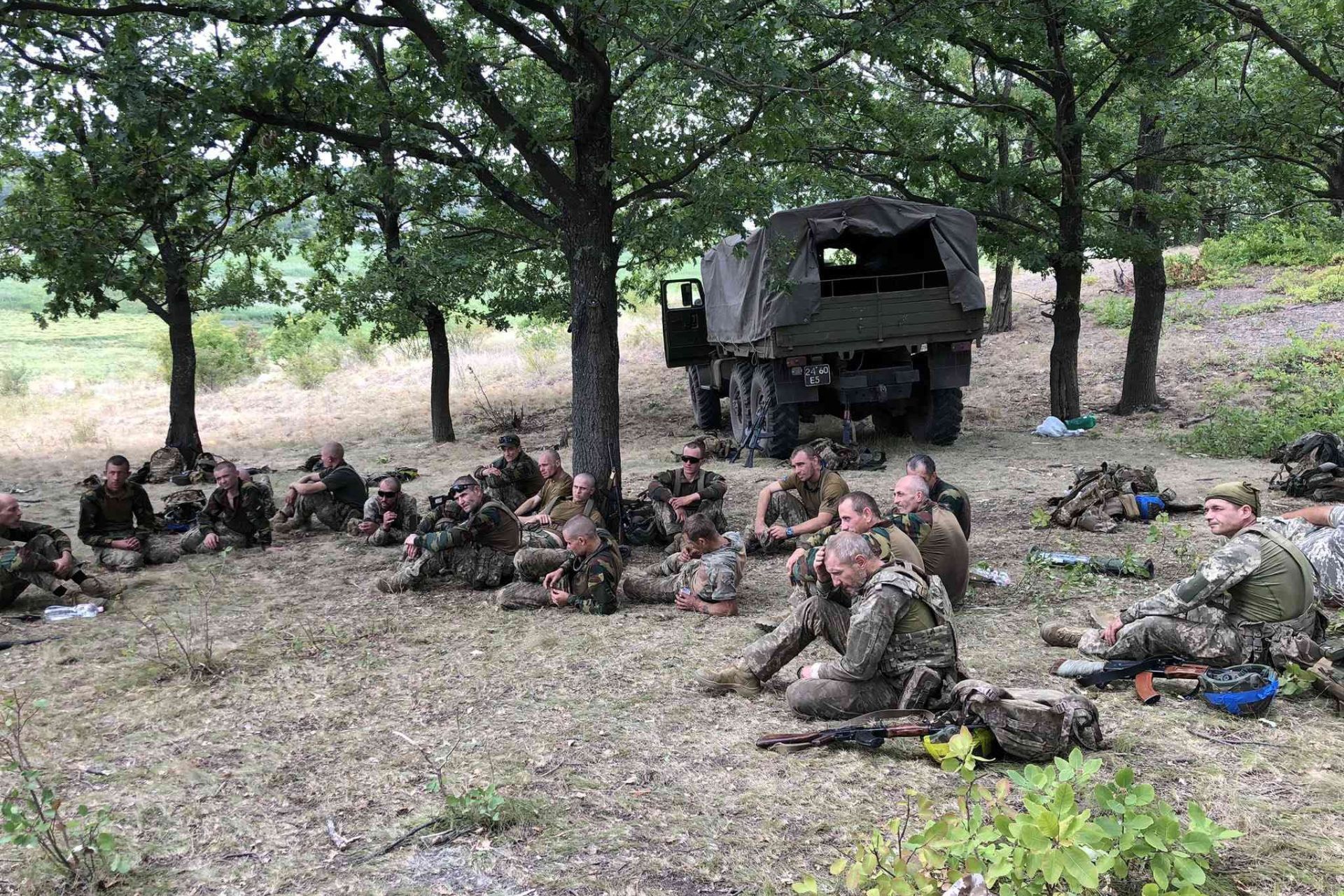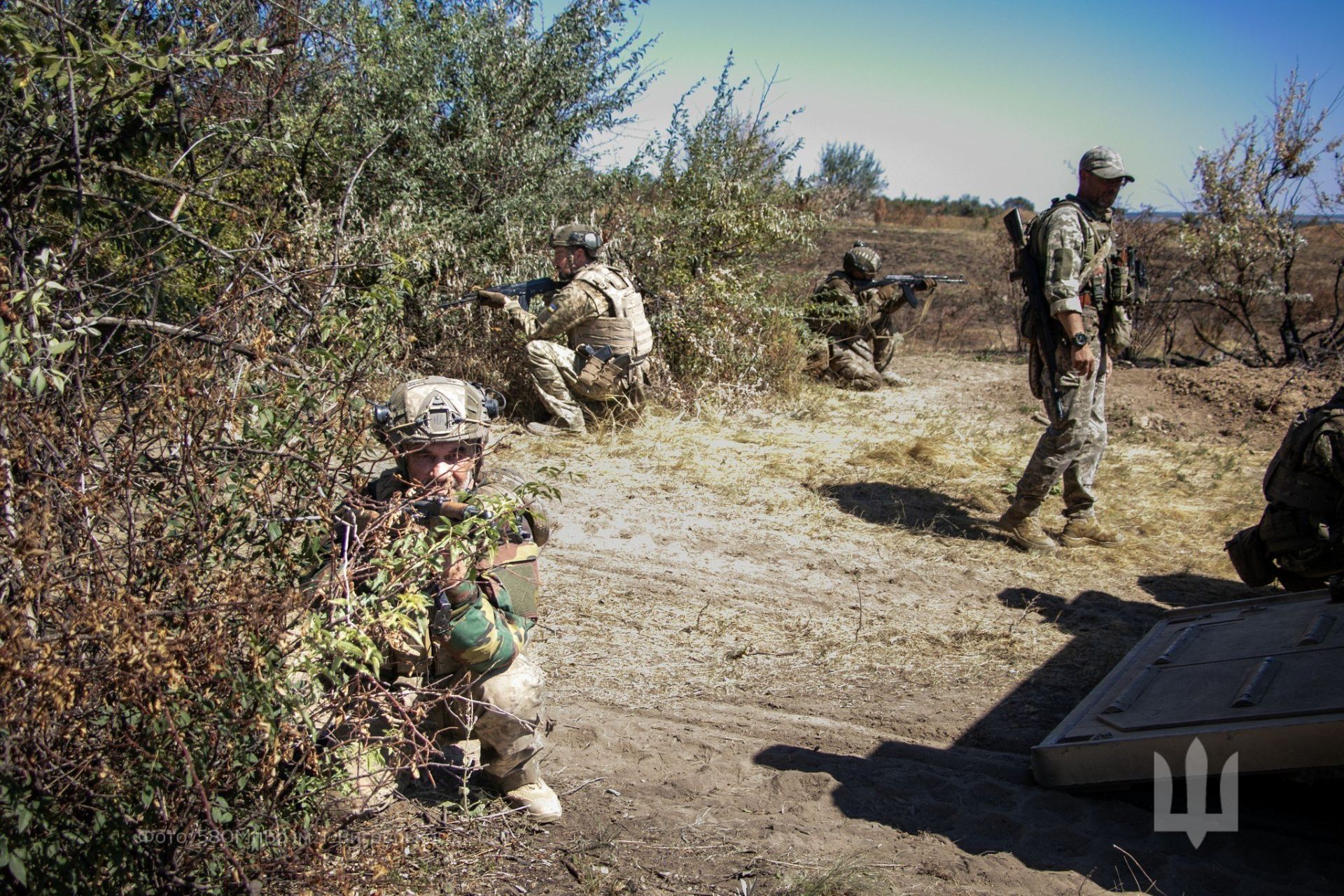Breaking News
Ukraine wearing Belgian camouflage: a violation of laws of war?.
Ukraine uses Belgian camouflage for its military units. Faced with an increased number of recruitments, Ukraine resorts to foreign camouflages to equip its soldiers. Currently, these are seen in training images. We do not have combat scene images showing this foreign camouflage; its use is somewhat unclear in terms of the laws of war, but let's try to clarify.
Follow Army Recognition on Google News at this link

Ex-Belgian Jigsaw camouflage uniforms in use with Ukraine's 17th Separate Tank Brigade.(Picture source: Ukraine MoD)
Jigsaw pattern
The Jigsaw camouflage, also known as "puzzle camouflage," is a distinctive pattern originally developed by the Belgian army in the 1950s. This type of camouflage is recognized for its complex pattern of interlocking irregular shapes, reminiscent of puzzle pieces. The colors used typically vary between greens, browns, and blacks, making it particularly suitable for wooded or densely vegetated environments. The primary purpose of this design is to break up the wearer's silhouette, thus making them less visible in natural settings.
Over the years, the Jigsaw camouflage and its tricolor derivatives have been adopted and modified by several other armed forces around the world. Each country and unit may have variations in the color palette and pattern layout, tailored to the specific environments in which they operate. In Belgium, this camouflage was extensively used until it was gradually replaced by more modern patterns that offer better concealment in a broader range of environments.
Today, although less common in the ranks of modern armies, the Jigsaw camouflage remains emblematic and is often seen in military surplus and among collectors. In Ukraine, former Belgian Jigsaw uniforms have found new utility, providing an interesting example of the reuse of military equipment. This highlights the importance of flexibility and adaptability of military equipment in contemporary conflicts, where resources can often be limited.

Jigsaw camo shirts in use with the 93rd Mechanised Brigade. ( Picture source : Ukrainian MoD)
Jus in bello
The laws of war require combatants to be identified by a uniform, which may seem trivial but is not. Imposed by Additional Protocol 1 (Article 44), wearing a uniform guarantees the soldier the status of combatant and thus, when captured, that soldiers are eligible for prisoner of war status. This status confers several protections, such as the right to humane treatment and protection against violence, insult, and public curiosity. In contrast, combatants who do not wear a uniform or who use civilian clothes for camouflage can be considered as snipers or mercenaries.
Furthermore, it is specified that the wearing of the uniform must be fixed, meaning that all combatants must wear the same uniform, according to the nation. This guarantees protection of the environment of combat and the misidentification of targets.

Another sighting of Jigsaw in use with the 58th Motorized Brigade.(Picture source : Ukrainian MoD)
A violation of the laws of war?
Not really, states are not obliged to use other uniforms for their training. For example, France wears a digital blue uniform to simulate opposing forces during exercises. However, there are reasons for wearing a different uniform.
Firstly, uniforms are worn in situations quite harsh for the fabrics, particularly during movements and very dynamic phases of combat. We know that Ukrainians enroll their civilians at a high speed, and as a result, the stock of available uniforms simply runs out. Therefore, during training phases, wearing a uniform that is equally resistant but of a different color, although no longer really worn—the Belgians having adopted multicam for their military—does not constitute a violation of international humanitarian law, the official name for the laws of war.


























